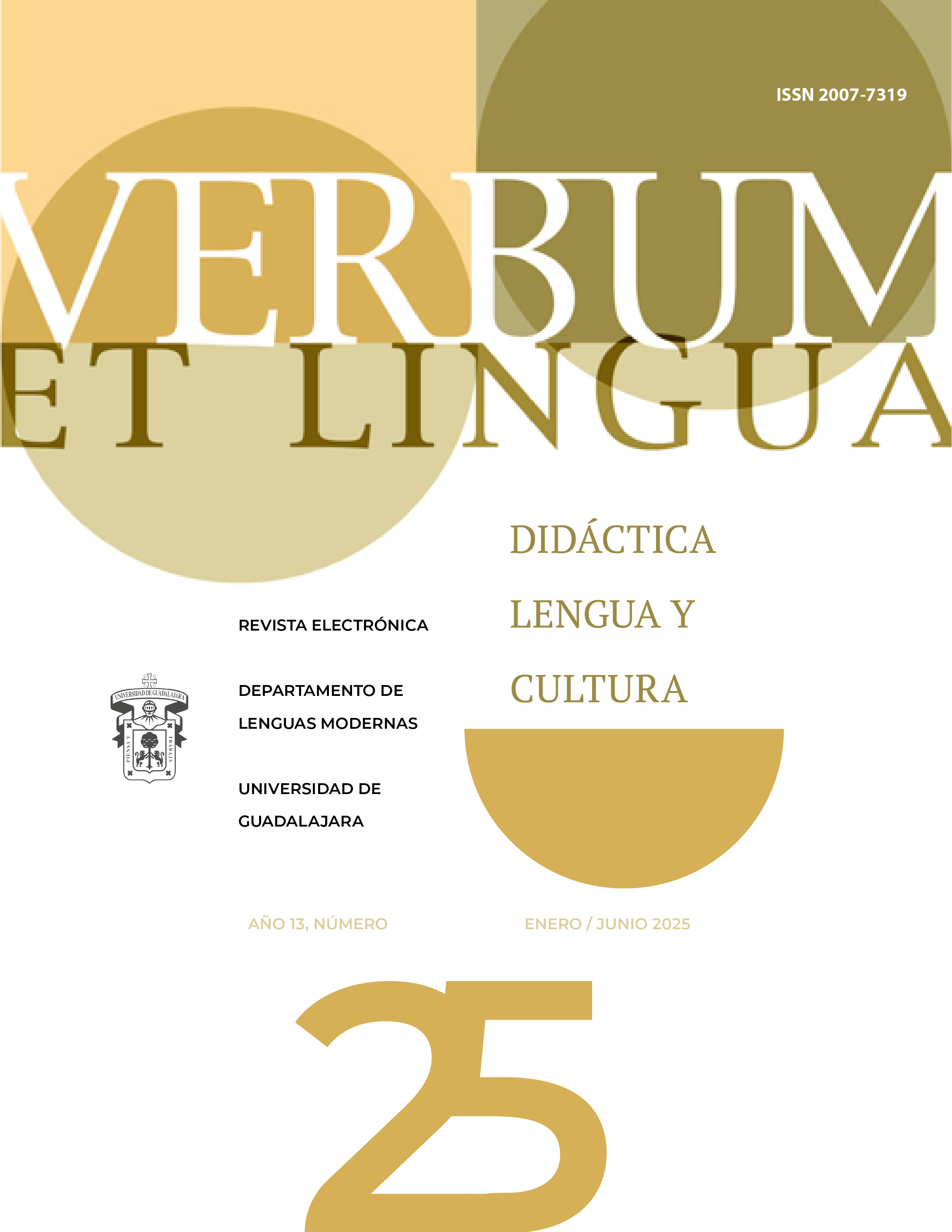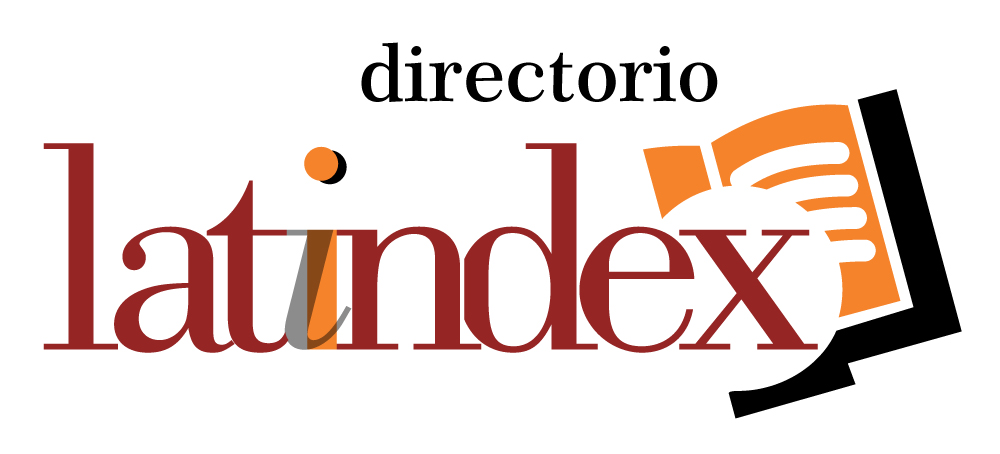Specific Language Impairment and Linguistics Typology: Narrative Review
DOI:
https://doi.org/10.32870/vel.vi25.299Keywords:
Language Disorders, Specific Language Impairment, Linguistics Typology, Narrative Review, PsycholinguisticsAbstract
This study aims to identify the differences and similarities in the narrative productions of children with Specific Language Impairment (SLI) in different languages. This can aid in the classification and diagnosis of SLI by identifying patterns through linguistic typology. Linguistic typology studies languages based on their formal characteristics to find generalizable patterns that explain their functioning. This can be particularly helpful in studying SLI, which is characterized by difficulties in acquiring, producing, and comprehending language skills. The specific affected areas depend on the speaker's language. To achieve this, a narrative review of 19 articles from seven languages with different typologies (Spanish, Finnish, Russian, Dutch, English, Cantonese, and Mandarin) was conducted. Specific markers of SLI were identified, and their presence or absence was compared with those of other languages. Less syntactic complexity, less lexical diversity, and shorter sentence length were identified in the productions of children with SLI, although to different extents. This could be interpreted as a persistent marker in children's speech with SLI. The results are inconclusive, as the articles did not provide a complete linguistic description and differed in the elicited narratives. However, the data support the possibility that basic markers for SLI can be found when a methodology based on recognizing different linguistic typologies is used with thorough descriptions of the linguistic elements.Downloads
Metrics
References
Auza B, A.; Towle Harmon, M., & Murata, C. (2018). Retelling stories: Grammatical and lexical measures for identifying monolingual Spanish speaking children with specific language impairment (SLI). Journal of Communication Disorders, 71, 52-60. https://doi.org/10.1016/j.jcomdis.2017.12.001
Bal?i?nien?, I. & Kornev, A. N. (2016). Doing new things with language: Narrative language in SLI preschoolers. Eesti Rakenduslingvistika Ühingu aastaraamat= Estonian Papers in Applied Linguistics. Tallinn: Eesti Keele Sihtasutus, 12, 25-42. http://arhiiv.rakenduslingvistika.ee/ajakirjad/index.php/aastaraamat/article/view/ERYa12.02
Bishop, D., Snowling, M., Thompson, P. & Greenhalgh, T. (2016). CATALISE: A multinational and multidisciplinary Delphi consensus study. Identifying language impairments in children. PLOS one, 11(7). https://doi.org/10.1371/journal.pone.0158753
Coloma, C.J., Araya, C., Quezada, C., Pavez, M.M., Álvarez, C., & Maggiolo, M. (2019). Development of grammaticality and sentence complexity in monolingual Spanish Speaking children with specific language impairment: An exploratory study. Sintagma, Revista de Lingüística, 31, 87-101. https://dialnet.unirioja.es/servlet/articulo?codigo=7224385
Colozzo, P.; Gillam, R.B.; Wood, M.; Schnell, R.D., & Johnston, J.R. (2011). Content and Form in the Narratives of Children with Specific Language Impairment. Journal of Speech, Language, and Hearing Research: JSLHR, 54(6), 1609–1627. https://doi.org/10.1044/1092-4388(2011/10-0247)
Comrie, B. (2001). Different views of language typology. En M. Haspelmath, E. König, W. Oesterreicher & W. Raible (Eds.). Language Typology and Language Universals. An International Handbook (Vol. 1, pp. 25-39). Gruyter.
Crago, M., Paradis, J., & Menn, L. (2008). Cross-linguistics Perspectives on the Syntax and Semantics of Language Disorders. En M.J. Ball, M.R. Perkins, N. Müller, & S. Howard (Eds.). The Handbook of Clinical Linguistics (pp. 275-289). Blackwell.
Duinmeijer, I., de Jong, J., & Scheper, A. (2012). Narrative abilities, memory, and attention in children with a specific language impairment. International Journal of Language & Communication Disorders, 47(5), 542-555.https://doi.org/10.1111/j.1460-6984.2012.00164.x
Duman, Y. T., Blom, E., & Topba?, S. (2015). At the intersection of cognition and grammar: deficits comprehending counterfactuals in Turkish children with specific language impairment. Journal of Speech, Language, and Hearing Research, 58(2), 410-421.https://doi.org/10.1044/2015_JSLHR-L-14-0054
Duman, Y. T., & Topba?, S. (2016). Epistemic uncertainty: Turkish children with specific language impairment and their comprehension of tense and aspect. International Journal of Language & Communication Disorders, 51(6), 732-744.https://doi.org/10.1111/1460-6984.12244
Fresneda, M.D., & Mendoza, E. (2005). Trastorno específico del lenguaje: Concepto, clasificaciones y criterios de identificación. Revista de Neurología, 41 (1), 51-56. https://doi.org/10.33588/rn.41S01.2005317
Håkansson, G. (2017). Typological and developmental considerations on specific language impairment in monolingual and bilingual children: A Processability Theory account. Language Acquisition, 24(3), 265–280. https://doi.org/10.1080/10489223.2016.1192634
Harris, A. & Xu, Z. (2006). Diachronic Morphological Typology. En K. Brown (Ed.). Encyclopedia of Language and Linguistics (2nd ed., pp.509-515). https://doi.org/10.1016/B0-08-044854-2/00186-3
Hincapié-Henao, L. Giraldo-Prieto, M., Lopera-Restrepo, F., Pineda-Salazar, D. A., Castro-Rebolledo, R., Lopera-Vásquez, J. P., ... & Lopera-Echeverri, E. (2008). Trastorno Específico del Desarrollo del Lenguaje en una población infantil colombiana. Universitase Psychologica, 7(2),557-569.
Iacobini, C. (2006). Morphological Typology. En K. Brown (Ed.). Encyclopedia of Language and Linguistics (2nd ed., pp. 278-282). Elsevier Science.
Iao, L. S., Ng, L. Y., Wong, A. M. Y., & Lee, O. T. (2017). Nonadjacent dependency learning in Cantonese-speaking children with and without a history of specific language impairment. Journal of Speech, Language, and Hearing Research, 60(3), 694-700.https://doi.org/10.1044/2016_JSLHR-L-15-0232
Kunnari, S., Savinainen-Makkonen, T., Leonard, L. B., Mäkinen, L., Tolonen, A. K., Luotonen, M., & Leinonen, E. (2011). Children with specific language impairment in Finnish: The use of tense and agreement inflections. Journal of Child Language, 38(5), 999-1027. https://doi.org/10.1017/S0305000910000528
Kunnari, S., Savinainen-Makkonen, T., Leonard, L. B., Mäkinen, L., & Tolonen, A. K. (2014). The use of negative inflections by Finnish-speaking children with and without specific language impairment. Clinical Linguistics & Phonetics, 28(9), 697-708.https://doi.org/10.3109/02699206.2014.886725
Leonard, L. B. (2014). Specific language impairment across languages. Child development perspectives, 8(1), 1-5. https://doi.org/10.1111/cdep.12053
Mäkinen, L., Loukusa, S., Laukkanen, P., Leinonen, E., & Kunnari, S. (2014). Linguistic and pragmatic aspects of narration in Finnish typically developing children and children with specific language impairment. Clinical Linguistics & Phonetics, 28(6), 413-427.https://doi.org/10.3109/02699206.2013.875592
Moravcsik, E. A. (2013) Introducing Language Typology, Cambridge University Press.
Moreno Cabrera, J. C. (2003). Síntesis y análisis en las lenguas: crítica de la tipología morfológica clásica y de algunas de sus aplicaciones sincrónicas y diacrónicas. ELUA. Estudios de Lingüística (17), 465-504.http://dx.doi.org/10.14198/ELUA2003.17.26
Moseley, C. (2006). Russian Federation: Language Situation. En K. Brown (Ed.) Encyclopedia of Language and Linguistics (2nd ed., pp. 698-701). Elsevier Science.
Packard, J.L (2006). Chinese as an Isolating Language. En K. Brown (Ed.) Encyclopedia of Language and Linguistics (2nd ed., pp. 355-358). Elsevier Science.
Pearce, W. M., James, D. G., & McCormack, P. F. (2010). A comparison of oral narratives in children with specific language and non-specific language impairment. Clinical Linguistics & Phonetics, 24(8), 622-645.https://doi.org/10.3109/02699201003736403
Petersen, D. B., & Gardner, C. M. (2011). Trastorno Específico del Lenguaje: una revisión. Revista Chilena de Fonoaudiología, 10, 19-32.https://doi.org/10.5354/rcdf.v10i0.17348
Rothweiler, M., Chilla, S., & Babur, E. (2010). Specific language impairment in Turkish: Evidence from case morphology in Turkish–German successive bilinguals. Clinical Linguistics & Phonetics, 24(7), 540-555.https://doi.org/10.3109/02699200903545328
Sauerland, U., Grohmann, K. K., Guasti, M. T., An?elkovi?, D., Argus, R., Armon-Lotem, S., Arosio, F., Avram, L., Costa, J., Dabašinskien?, I., De López, K., Gatt, D., Grech, H., Haman, E., Van Hout, A., Hrzica, G., Kainhofer, J., Kamandulyt?-Merfeldien?, L., Kunnari, S., … Yatsushiro, K. (2016). How do 5-year-olds understand questions? Differences in languages across Europe. First Language, 36(3), 169–202. https://doi.org/10.1177/0142723716640236
Sheng, L., & McGregor, K. K. (2010). Object and action naming in children with specific language impairment. Journal of Speech, Language, and Hearing Research, 53(6), 1704-1719. https://doi.org/10.1044/1092-4388(2010/09-0180)
Swan, M. (2006). English in the Present Day (Since ca. 1900). En K. Brown (Ed.). Encyclopedia of Language and Linguistics (2nd ed. pp: 149-156). Elsevier Science.
Tribushinina, E., & Dubinkina, E. (2012). Adjective production by Russian-speaking children with specific language impairment. Clinical Linguistics & Phonetics, 26(6), 554-571. https://doi.org/10.3109/02699206.2012.666779
Tribushinina, E., Dubinkina, E., & Sanders, T. (2015). Can connective use differentiate between children with and without specific language impairment? First Language, 35(1), 3-26. https://doi.org/10.1177/01427237145663
Tsai, W. y Chang, C. (2008). “But I first… and then he kept picking”: Narrative skill in Mandarin-speaking children with language impairment. Narrative Inquiry, 18(2), 349-377.https://doi.org/10.1075/ni.18.2.09tsa
To, CKS; Stokes, SF; Cheung, HT; T'sou, BKY (2010) Narrative assessment for Cantonese-speaking children. Journal of Speech, Language, and Hearing Research, 53, (3), 648–669. https://doi.org/10.1044/1092-4388(2009/08-0039)
Torng, P. & Sah, W. (2020) Narrative abilities of Mandarin-speaking children with and without specific language impairment: macrostructure and microstructure. Clinical Linguistics & Phonetics,34(5) 453-478.https://doi.org/10.1080/02699206.2019.1655097
Ward, D. (2006). Russian. En K. Brown (Ed.) Encyclopedia of Language and Linguistics (2nd ed., pp695- 698). Elsevier Science.
Wong, A., Klee, T., Stokes, S.F., Fletcher, P. & Leonard, L.B. (2010). Differentiating Cantonese-speaking preschool children with and without SLI using MLU and lexical diversity (D). Journal of Speech, Language, and Hearing Research, 53(3), 794-799. https://doi.org/10.1044/1092-4388(2009/08-0195)
Zwitserlood, R., van Weerdenburg, M., Verhoeven, L., & Wijnen, F. (2015). Development of morphosyntactic accuracy and grammatical complexity in Dutch school-age children with SLI. Journal of Speech, Language, and Hearing Research, 58(3), 891-905. https://doi.org/10.1044/2015_JSLHR-L-14-0015
Downloads
Published
Versions
- 2025-08-13 (3)
- 2025-02-21 (2)
- 2025-02-12 (1)













